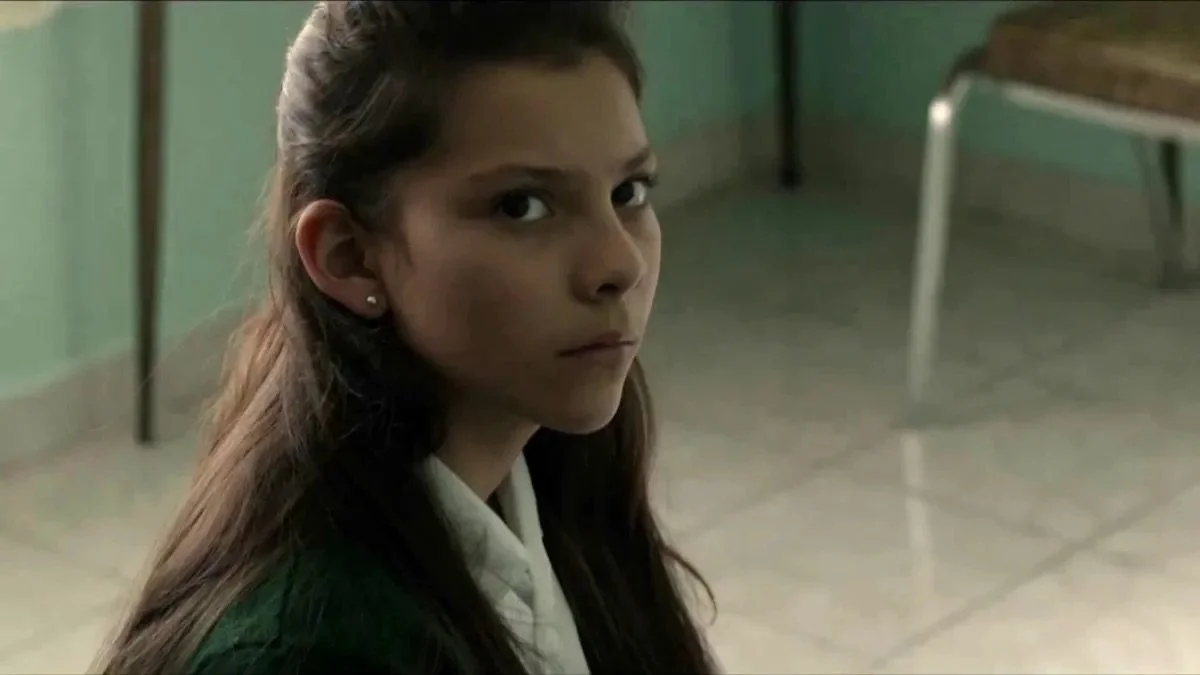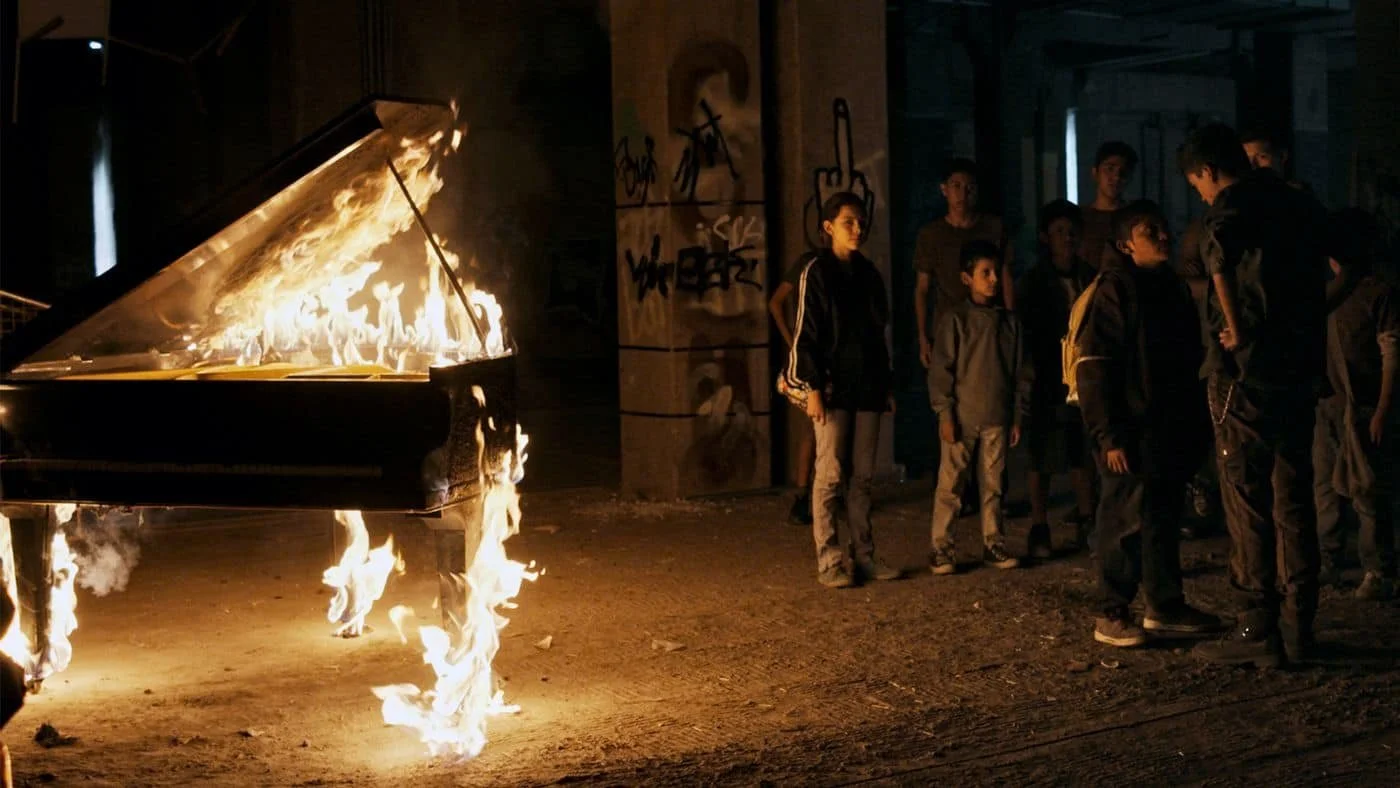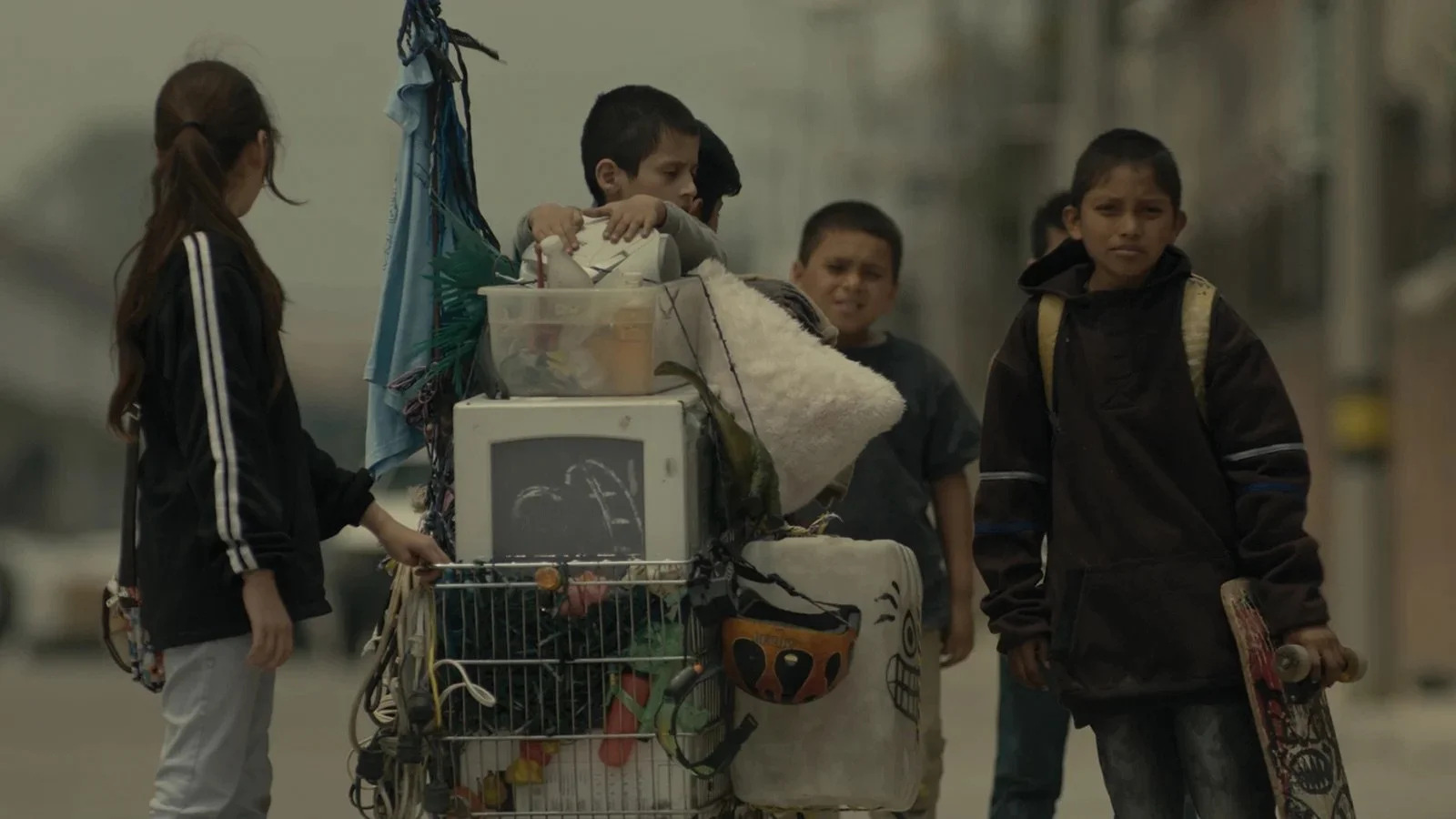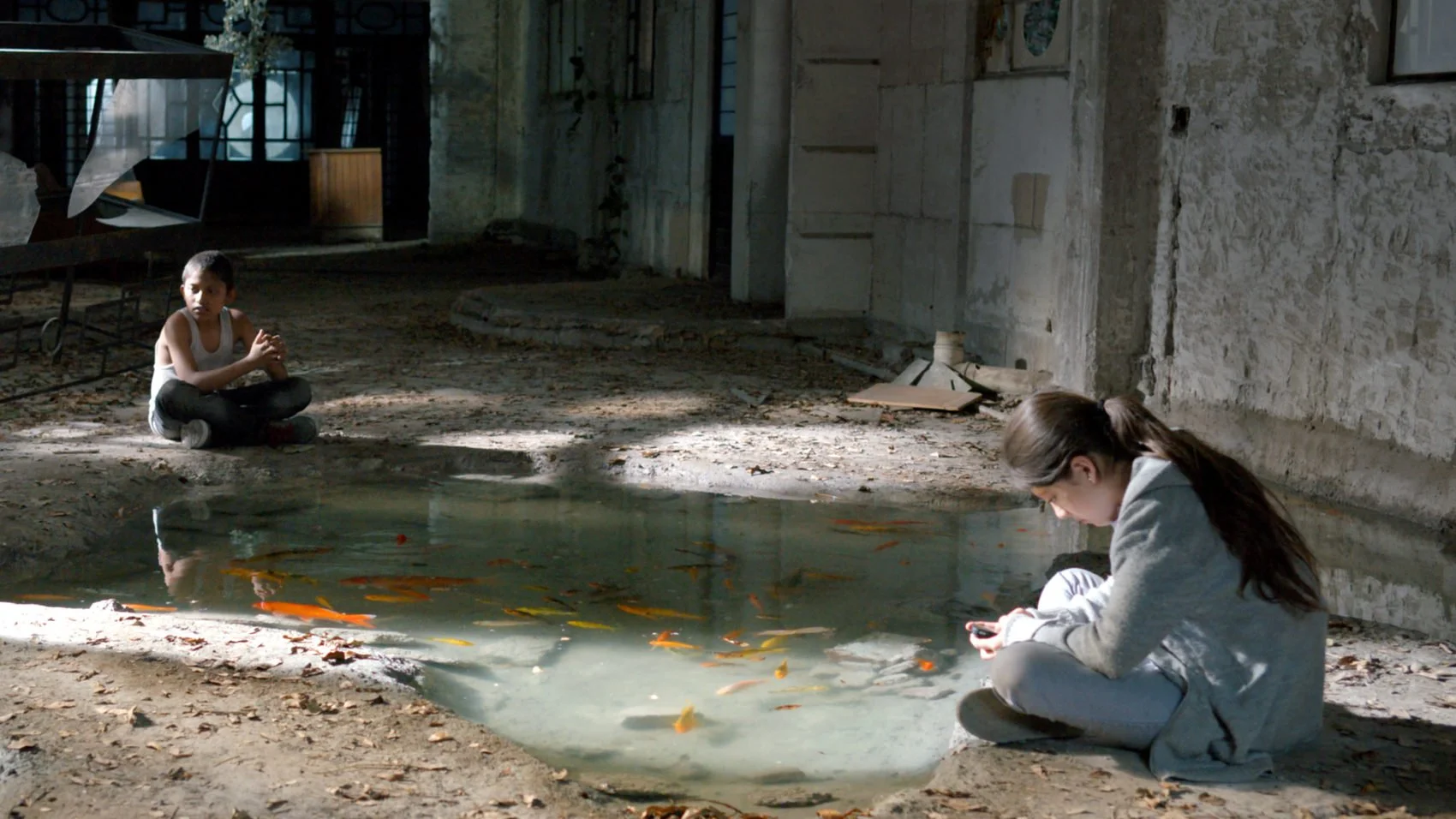Kingdom of Broken Things: Tigers Are Not Afraid (2017)
Women’s History Month Series—four films, four killer directors
Poster art
Welcome to the first of a four-part series featuring horror films directed by women. Our first foray takes us to Mexico with its rich traditions in horror and especially magical realism.
“We forget who we are when the things from outside come to get us.”
-Estrella
Tigers Are Not Afraid—or Vuelven in the original Spanish language title—is set during the violent drug wars that have raged in parts of Mexico in the 21st century. While many popular TV shows and films have focused on the drama and bloody mayhem associated with the rise and fall of drug lords and their clashes with law enforcement, Tigers Are Not Afraid takes a different route. Writer/director Issa Lopez is interested in the less told and perhaps less “cinematic” story of the tens of thousands of children orphaned by the murders and kidnappings within these conflicts.
At the center of this story is a fictional archetype of one of these children. Estrella (Paola Lara) is a kind and thoughtful 10 year-old girl whose mother has gone missing in a neighborhood engulfed by conflict. Though her disappearance is a mystery, we strongly suspect she is another victim of the cartels. Estrella is alone, confused, hungry, and increasingly aware of a presence that makes itself known through whispered voices and lingering shadows. In need of food and companionship, Estrella leaves her apartment and ventures out into the world all alone.
Estrella
She soon joins a small group of orphaned school-aged boys living in a makeshift roof top encampment. Looking to build any semblance of a comfortable life, they have scavenged an old couch, pillows, toys, and an old TV. The group is led by El Shine (Juan Ramon Lopez), a sometimes gruff pre-adolescent whose fierce exterior conceals real pain and vulnerability. There’s also the wisecracking and fun-loving Pop (Rodirgo Cortes) and the wry and clever Tucsi (Hanssel Casillas)—these two are as thick as thieves. Rounding out the group is the youngest member, Morro, who is nonverbal, empathetic, and never without his tattered security tiger stuffy. Every member of the group, including Estrella, has lost parents and experienced some form of trauma during their young lives.
Estrella gradually gains the group’s acceptance, even endearing herself to them by freeing (from literal cages) Morro and other children who had been captured by a local cartel soldier named Caco. She also forms a bond with little Morro, looking after him like a doting and affectionate big sister.
Unfortunately, our little group soon becomes the target of a local corrupt and ruthless politician named El Chino and his henchman, the Huascas. Chino is after a stolen cell phone that Shine got a hold of early in the film and which contains an incriminating video he cannot afford to have leaked. This sets the children on an ominous collision course with the Huascas. Sensing the danger of staying put, our little band must pack up and move on. They hit the road via a sad but scrappy little caravan made up of a shopping cart, bicycle, and a skateboard.
Estrella, meanwhile, is determined uncover the fate her mother as she and the group try to avoid getting in the cross hairs of the Huascas. But this story is not confined to our known world, as macabre and seemingly fantastic images creep into the action from the outset. For starters, Estrella carries with her a few pieces of chalk that her teacher gifted her during an intense gun battle outside her school. The teacher imbued the chalk with magical properties that Estrella will employ later in the film, though she is never sure if these do more harm than good.
Despite being in a near perpetual state of mortal danger, the children do share wonderful if fleeting moments of reprieve where they are allowed to just be children. Most notably perhaps is when they gain access to an abandoned and once lavish hotel. We see them host a talent contest, kick around and decorate a set of brand-new soccer balls, hold impromptu dance parties, and marvel at a school of fish swimming in a makeshift pond. And while Shine and co. are to some degree hardened and calloused by the world, it’s a joy to watch them just be kids: playing, acting silly, and displaying genuine generosity towards each other.
We also see Shine struggle with his own sense of worth and value. He feels guilt and shame for having faltered in the bravery department in a pivotal scene earlier in the film. It is especially poignant that these children, who already have had so much taken away from them, aspire to hold onto some semblance of dignity in an otherwise shattered world that for all intents and purposes has discarded them. To them, bravery, dignity, and self-worth are all personified by the regal, majestic tiger. We see the group frequently invoking this animal and spray painting graffiti representations of it wherever they go.
Tiger artwork courtesy of Shine.
Magical realism figures heavily in Lopez’s storytelling as she weaves fantastical elements into the real world through a very grounded narrative. Estrella is both haunted and aided by ghosts of the many victims of the cartel, including the beckoning, corpse-like visage of her mother and other victims of the drug wars. These ghosts are covered in plastic and speak in strained whispers that seem to be beckoning Estrella to bring them “him,” whoever that might be.
Throughout the film Estrella encounters small, fantastical creatures and even death itself, represented as a sentient stream of blood that follows her through much of the movie. In this world, the specter of death is ever present. But how long can Shine, Estrella, and the others expect to survive with Chino out to get them and with no help in sight?
Estrella meets a new friend
My two cents
While there are some small pacing issues and a few weak digital effects, these for me are minor quibbles in an otherwise smart, moving, and heart-wrenching film that is skillfully delivered in under 90 minutes. By now, you know that I appreciate movies that don’t overstay their welcome, and this film certainly abides by this rule of etiquette.
A huge creative boon for Tigers Are Not Afraid lies in the truly wonderful and very natural performances by the child actors. Paola Lara as Estrella and Juan Ramon Lopez as Shine are standout leads; we watch them negotiate trauma and loss as their group is left to their own devices among veritable ghost towns. I don’t think the film would have been nearly as moving if not for the performances of these kids; I just love them!
I really appreciated the production design as well, which seems to have the full advantage of on-location shooting—done primarily in Mexico City's Azcapotzalco municipality and the Colonia Guerrero neighborhood—at abandoned lots and warehouses and in desolate streets, all of which enhance that eerie ghost town aesthetic. Missing persons flyers taped to fences, overgrown alleyways, scattered black ribbons honoring the victims of the drug wars—they all make the setting very real, the kind of place where our seemingly forsaken kids are truly on their own.
Shine & Estrella reflect by a tiny pool of fish that escaped from a shattered fish tank.
The restrained musical score by Vince Pope is used sparingly and its softness belies the intensity and visceral nature of much of the film’s content. The main theme in particular, both sad and beautiful, complements the tragic storyline. Vince also scored the music for True Detective: Night Country (2024), for which Lopez served as writer, director, and show runner.
Lopez also delivers in the horror and suspense department, including some harrowing encounters with the ruthless El Chino and the Huascas. Throughout the film, Estrella is confused and terrified by spectral-like corpses who are figuratively and literally reaching out to her. I am not even sure “ghosts” is the correct term here as these beings are quite corporeal and capable of reaching and grabbing hold of poor Estrella.
Tigers are Not Afraid begs the question: how do children reconcile with a cruel world that would chew thew them up and spit them out? While there is no satisfactory answer, the film seems to suggest that kids like Estrella, Shine, Pop, Tusci, and Morro embrace—or better yet, conjure—the fantastical to steel themselves against such a world. It may also be that, as discussed earlier, the best these children strive for is to summon courage and dignity when everything else is out of their control. This theme, which runs throughout the film, is captured in the following voiceover from Shine and Estrella:
“Tigers are not afraid. They went through all the bad stuff. And came out on the other side. They are kings of this kingdom of broken things. Because we have to remember, we are princes, we are warriors, and tigers. And tigers are not afraid.”
Is this a wish? a mantra? It’s hard to say for sure.
In many ways this is a bleak and somber film, though not without some humor and a lot of heart. I won’t give away the end, but I think it is fair to say that it packs an emotional punch. This is the type of film that will likely stay with you long after the final credits roll.
Publicity still of Estrella (Paola Lara), Tucsi (Hanssel Casillas), Morro (Nerry Arrendondo), Pop (Rodrigo Cortes), and Shine (Juan Ramon Lopez).
Trigger Warning: children are in mortal danger through much of the run time of this film, which some might find disturbing.
About the director
Mexico City native Issa Lopez did not start out in horror. In 2003 she wrote and directed Ladies Night, a romantic comedy that became a big hit in Mexico. Although Lopez was not especially happy with the film, she has acknowledged that it opened several doors for her. And while she went on to direct other successful comedies in her home country, she eventually relocated to Los Angeles to try her hand at new projects and themes closer to her heart.
Lopez has in various interviews spoken about formative experiences and creative inspirations that have informed her work. Most significantly perhaps was the sudden death of her mother when Lopez was only eight years old; sadly, she never got the chance to say goodbye. This, she says, figured prominently in Tigers. Lopez is a huge fan of murder mysteries, thrillers, and horror and has long loved the stories of Sherlock Holmes and the works of Stephen King. She has discussed the dominant influences of her Latin American background, where magical realism features prominently. We certainly see those influences in Tigers Are Not Afraid.
Did you know?
The children in the cast had no prior experience acting, though they did participate in improvisational workshops before filming began.
It will probably come as no surprise that Guillermo del Torro is a champion of this film, which on some level evokes the same magical realism we see in some of his horror/fantasy films like The Devil’s Backbone and Pan’s Labyrinth.
Among other famous fans of this movie are authors Stephen King and Neil Gaiman.
Tigers Are Not Afraid was completed nearly a decade ago; it eventually had a limited theatrical release in North America in 2019 before moving to the horror streaming service Shudder.
It has been reported that Lopez is coming back as writer, director, and show runner for a fifth season of True Detective, with details still to come.
How did I watch?
Streaming on Shudder
Format: Spanish language with English subtitles
Cast (abridged)
Paola Lara – Estrella
Juan Ramon Lopez – El Shine
Nery Arrendondo – Morro:
Hanssel Casillas – Tucsi
Rodrigo Cortes – Pop
Ianis Guerrero – Caco
Tenoch Huerta – El Chino
Crew (abridged)
Screenwriter Writer & Director – Issa Lopez
Cinematographer – Juan Jose Saravia
Editor – Joaquim Martí
Composer – Vince Pope
Producer – Marco Polo Constandse (Filmadora Nacional and Peligrosa)
Running Time: 1h 23m
Recommendations based on Tigers Are Not Afraid
The Devils Backbone (2001)
Pans Labyrinth (2006)
Beasts of the Southern Wild (2012)
Supplements
In 'Tigers Are Not Afraid,' A Dark Fantasy Amid Mexico's Drug War (NPR)
Interview: Issa López (Film Comment)
The Haunted Street Children of “Tigers Are Not Afraid” (The New Yorker)
How a Sherlock Holmes Obsession and Personal Loss Informed Issa López’s ‘True Detective’ (Los Angeles Times)
Next Up - We travel back to the 1980s with yet another new take on vampirism.

















